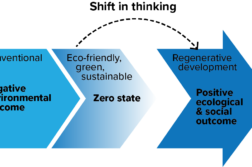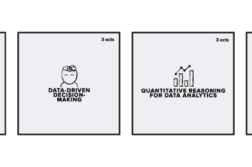Design thinking is a method through which new thought structures and solutions to organizational challenges can be built without sector-specific restrictions. In the spring of 2020, horticulture students set out to solve the business challenge of an Italian company based on their own field and customer and market understanding.
(This post is originally posted in HAMK Beat edited blog in Finnish. )
In many ways, layered cultivation is considered a significant change in how the efficiency of cultivation and the use of resources can be optimized. HAMK has a layer culture container at its disposal, which makes it possible to study and optimize the cultivation of different plants. However, the organization that built the container had not had time during its product development process to comprehensively develop the various usage scenarios of the cultivation container. In scenario thinking, we wanted to combine the possibilities and limitations of design thinking and horticulture, through which the students created low-level prototypes for use by the ordering organization.
The project was implemented as a customized project from HAMK’s DIILI implementation model:
- The teachers agree with the ordering organization on a project suitable for the course, where the students increase their own competence in their own field and in terms of project-like work
- The customer commits to describing the project to the students, guiding them and giving final feedback on the projects
- Students are mainly responsible for their own project choices, goals and the success of teamwork
- The teachers act as facilitators during the process, enabling students to have a safe and favorable environment for learning
Senior teacher of horticulture Arto Vuollet: In the design thinking project, the first-year students immediately got to test their own innovation ability within the framework of a challenging project for an international customer. The presence of the business teacher taught both students and the customer to see their product in a larger social context than before – an experience that I also shared as a teacher of the subject subject.
Students drawing on uncertainty
Whereas many projects start from a pre-defined end result, the purpose of DIILI implementations is to be unclear and complex. Ambiguity and complexity mean challenges and making choices for students without yet knowing all the elements affecting the project. By operating under uncertainty, it is also possible to produce several different scenarios and solution models, because the students’ constraints are looser than the pre-defined project.
Uncertainty requires stretching from all actors: teachers and contact persons of organizations can create ready-made content, but at the same time get to reactively participate in students’ work as it is being built. Uncertainty is indeed an opportunity in DIILI commissions, from which we draw inspiration for creation – an open sandbox of creation for all actors.
Uncertainty brings its own limitations because time and resources are limited. Limited resources demand choices. Making choices and being responsible for choosing a direction also brings its own spice to learning – the project blank given with the same contents turns into many different implementations during the studies, also enabling different learning experiences and the contents to be learned.
What is needed from the extended teaching team?
The extended teaching team includes not only the teachers of the study course, but also all those parties who are making the implementation of the study course possible. The extended teaching team includes, among other things, partners, training coordinators, technical support and library staff, to name just a few significant parties. The most important thing in the operation of the extended team is the timeliness of the operation and equality. The main goal of all actors is to build study courses that support students, where in the case of Design Factory, the aim is to increase students’ design thinking ability.
Experience with DIILI
At its best, as in the feedback from the horticulture project, DIILI emerges through the exploitation of opportunities. The students described that the project increased their understanding of the interaction between horticulture, the customer perspective and business and brought new perspectives to their own studies. From the teacher’s point of view, Arto Vuollet comments that Diil was also a project that teaches realism, because the students also learn to understand better than before the consideration of various clear limitations, such as physical dimensions and pricing, in the design of their own concept.
Although DIILI with its uncertain elements enables different learning experiences, it is important to consider the strong role of planning in the successful implementation of a fast student project. The customer, the students, and the teaching team must understand the broader purpose of the project – to increase the students’ skills and create new solutions for the participating organizations.
Authors: Arto Vuollet works as head teacher of horticulture. Jukka Raitanen is a lecturer in business administration and the community manager of HAMK Design Factory.
(This post is originally posted in HAMK Beat edited blog in Finnish.)



